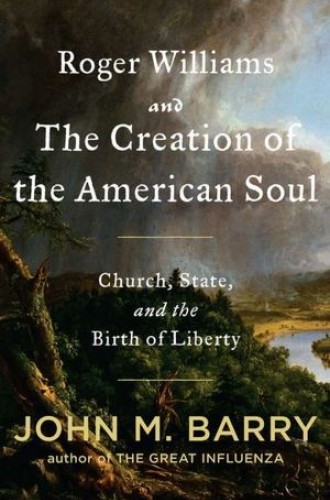The original separationist
In 1802, Thomas Jefferson wrote a letter to the members of the Danbury, Connecticut, Baptist Association. The Danbury Baptists were a disgruntled religious minority in a state with a Congregational establishment. Though they were no longer required to pay taxes to support Connecticut’s Congregational ministers, they remained engaged in a battle for complete religious liberty through the disestablishment of Congregationalism in their state.
Jefferson sympathized with the plight of his correspondents. Though he had no power to change the religious laws of Connecticut, he did encourage the Danbury Baptists by calling for “a wall of separation between Church & State.” In 1947 the Supreme Court of the United States agreed with Jefferson. It concluded in Everson v. Board of Education that there is indeed a “wall of separation” between religion and government, and it is “high and impregnable.”
Read our latest issue or browse back issues.
Most Americans do not realize that the phrase “separation between church and state” does not appear in the U.S. Constitution. Nor did the concept originate with Jefferson. It stems from the work of 17th-century dissenter Roger Williams, who called for a “hedge or wall of separation between the garden of the church and the wilderness of the world.” As John Barry argues, Williams thought that such a wall or hedge was absolutely necessary because the mixing of church and state corrupted the church. Williams, says Barry, believed that “when one mixes religion and politics one gets politics.”
Williams was an English Puritan. As a young man he was mentored by Edward Coke, the famed English lawyer, Puritan sympathizer and defender of liberty. Williams was an avid reader of Francis Bacon and was particularly attracted to Bacon’s belief that scientific investigation could pose a threat to inherited authority. Upon graduation from Cambridge, Williams was unable to obtain a pulpit because of Archbishop William Laud’s insistence that all clergy conform to the teachings of the Church of England. He thus took a post as chaplain for a prominent English family.
Eventually, Laud’s persecution of Puritans would lead many of them to migrate to New England. The so-called Pilgrims arrived at Plymouth in 1620, and roughly a decade later John Winthrop founded his “city on a hill” at Massachusetts Bay. Williams eventually joined the migration, settling as a religious teacher in Salem.
Almost from the moment of his arrival Williams became a threat to Winthrop’s religious experiment. He opposed government-mandated church attendance and loyalty oaths because he believed that these practices improperly mixed church and state. When the Massachusetts government tried to counter Williams’s teachings by attempting to remove him from his post at Salem, he interpreted the action as yet another example of the government interfering with the life of the church.
Meanwhile, Williams’s views were not helping him to make friends with his fellow Massachusetts ministers. By 1635, Winthrop, with support from the clergy, had successfully banned him from the colony. There were some in the Massachusetts leadership who wanted to execute him.
Barry is at his best in describing Williams’s next move—a long journey through the New England wilderness during the winter of 1635–1636. As he wandered in search of a new place to settle, the local Indians cared for him. Williams said that “the ravens fed me in the wilderness.” This would be the beginning of a friendly relationship with the Indians that would last throughout Williams’s life. He eventually settled in Narragansett country, along with a small group of followers, and established the town of Providence. Here he became an important diplomat in negotiations between warring Indian tribes and the Massachusetts Bay leadership.
Providence quickly became a haven for religious dissenters ousted from the other Puritan colonies in New England. Williams provided refuge for the radical religious followers of Samuel Gorton and accepted Quakers at a time when some of them were being hanged in Massachusetts for their aggressive evangelization tactics.
But Williams’s most important contribution was his articulation of a biblical philosophy of religious liberty. During a return to England to secure a charter for Providence and its neighboring settlements, and in the context of the English Civil War, Williams wrote The Bloudy Tenent, of Persecution, for Cause of Conscience. It was his life’s work, and it pushed the conversation about church and state beyond religious toleration to complete religious freedom. The Bloudy Tenent challenged the notion, made popular by Winthrop and the Puritans of Massachusetts Bay, that Old Testament Israel could serve as a model for a modern society. He attacked the idea that God gave material blessings or material punishments to societies or nations on the basis of their collective obedience to God’s will.
Today, as many Christians appeal to the Puritans, Plymouth Rock or the Mayflower Compact as the source of America’s supposed biblical and Christian foundations, Barry reminds us that there was an alternative vision to the intolerant Calvinism of early New England. Williams was a Puritan outcast, a defender of “soul liberty” and a devout Calvinist who rejected Winthrop’s city on a hill and established a colony for some of the most controversial religious dissidents of his age.
Anyone who reads Roger Williams and the Creation of the American Soul will need to come to grips with the fact that it is Williams, not Winthrop, who best represents the historical roots of the religious liberties that citizens of the United States enjoy today. It is unlikely that Jefferson read Williams, but their views on the relationship between church and state were roughly the same. Whatever the “wall of separation” means today, it is an idea with a long lineage in the American past.







